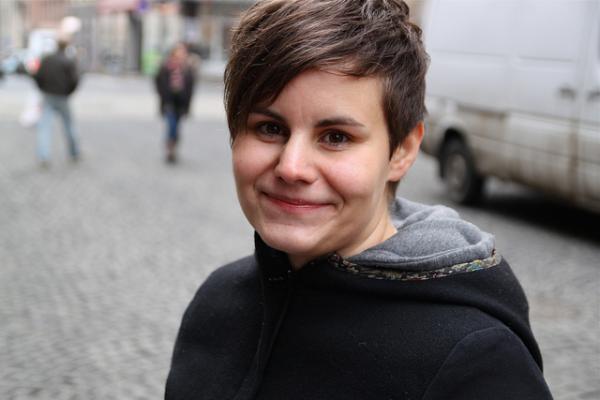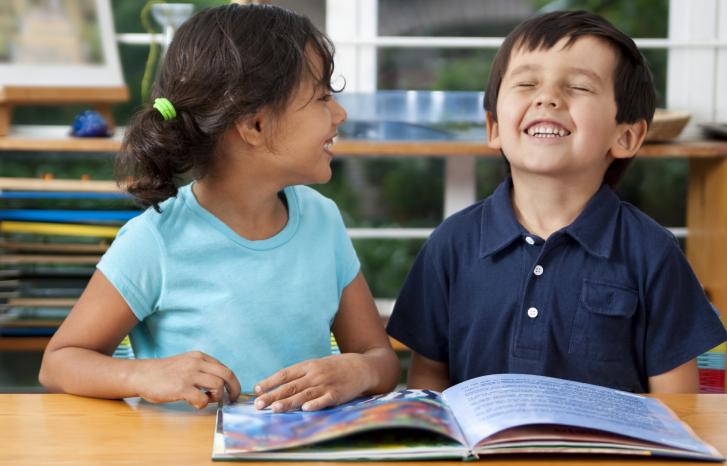A class at a school in Oslo in which 75 percent of the pupils have immigrant parents are discussing immigration and integration in Norwegian society. It soon becomes clear that the teacher’s and the pupils’ understandings of racism are completely different.
For the teacher, racism is synonymous with biological racism, which is not prevalent in Norway today. Consequently, he finds it difficult to explain why racism is widespread. For the pupils, racism has nothing to do with biology – it has to do with everyday discrimination and differential treatment.
At first the pupils refuse to give examples of negative aspects of immigration. Gradually they begin to discuss who is an immigrant and who is a “neger”, the Norwegian translation of the N-word.
Words like burka and female genital mutilation fly through the room and land on the only Somali pupil in the class. The teacher has nothing to contribute and no power over the situation, which degenerates into racial bullying.
“The Somali boy in this class is ‘racialized’ in that all the negative traits brought up about immigrants are transferred onto Somalis,” says Stine Helena Bang Svendsen, who presents a detailed study of the class discussion in her doctoral thesis Affecting change? Cultural politics of sexuality and “race" in Norwegian education.
“You are all racists!” shouts the Somali boy at the end of class before he leaves.
“This example is not about whether the teacher was good or bad. The knowledge we have about racism is such that people don’t recognize racism when it’s right in front of them,” says Svendsen.
Good intentions, poor outcomes
Svendsen, a researcher at the Norwegian University of Science and Technology, recently defended her thesis. She has however previously published articles as well as books, including the book Seksualitet i skolen (“Sexuality in the schools”). While her research on sex education has led to pilot projects and continuing education for teachers, very few have noticed her critique of racism in Norwegian schools.
“The Norwegian school wants to promote gender equality, homotolerance and anti-racism, but this requires a more fundamental and in many ways a more groundbreaking effort to change the underlying assumptions – that heterosexuality is normal and that everything Norwegian is essentially free and gender equal,” says Svendsen.
“The positive, liberal ‘Norwegian’ values of gender equality, free sexuality and diversity are depicted in today’s school system in ways that uphold racism and hierarchies between the genders.”
Racism creates “race”
The term “race” is used all the time in the English-speaking world, both in research and everyday speech. According to Svendsen, Norway has a more tense and confused relationship to the phenomenon. In her doctoral thesis, Svendsen has purposely put the word “race” in quotes to emphasize her understanding of the term.
“I use the term ‘race’ to describe ideas about inherent differences between groups of people. These ideas are produced by racism. If the racism is prevalent and powerful enough, then ‘race’ is the result.”
“In Norwegian society we often think of ‘race’ as the cause of racism, but it’s the other way around,” says Svendsen.
“It’s clear that there are many understandings of racism in Norwegian society and that the ambiguity about what racism entails creates challenges and conflicts in the schools.”
See also: Justifying gender equality through Islam
Homotolerant like a Norwegian
According to Svendsen’s analysis, the scope of Norwegian sex education can be summarized as follows: Sex is defined as coitus, and homosexuality is accepted in Norway. Sex as pleasure is not addressed, and the distinction between homo and hetero is sustained.
When Svendsen studied how sexuality is presented in Norwegian textbooks for pupils aged 13 to 16, she found that ethnicity, or “race”, inhabits a prominent part of the picture. The story told is about us here in Norway versus those in other parts of the world.
Norwegian and Western sexuality is free and gender equal; violence against women and government regulation of sexuality through legislation is not addressed. Sexual norms in other cultures are depicted as oppressive, often exemplified by arranged marriage and intolerance of homosexuality.
“Tolerating homosexuality – not a radical, queer homosexuality that challenges the norm, but traditional, stable gay and lesbian identities – appears as a key point in these textbooks which establishes Norwegian sexuality as especially ‘free’. We Norwegians tolerate homosexuality; the others don’t,” explains Svendsen.

Unspecified others
Svendsen’s analysis clearly shows how the textbooks use gender and sexuality to draw boundaries between us and them – the liberated Norwegians and the oppressed, non-Westerners or Muslims.
That which is Norwegian is presented as developed, and the others as under-developed. For example, the books compare arranged marriage in Norway in the 1800s with arranged marriage in the Muslim world today.
“There are comparable findings throughout the Nordic region, and it’s clear that what is presented in these texts is ‘common sense’ knowledge. An average reader won’t react to the content.”
“But seen in light of racist ideology and the history of racism, it’s clear that these educational texts employ a racist framework of understanding,” says Svendsen.
“Should the books not make an issue of arranged marriage and homophobia?”
“They should, but they should state who practices it, what it entails, where it happens, and how common it is. It must be dealt with conscientiously, as something that occurs at a particular place and time.”
“The most problematic rhetorical aspect of these texts is that they write about ‘the others’ without specifying which country, population group and historical period that is being discussed. As a result, they reproduce a fantasy about the other.”
Svendsen has not only analyzed the teaching material, but conducted classroom observations as well.
“It became clear to me that there are many highly skilled teachers out there who will set aside bad educational texts and create different knowledge together with the pupils. At the same time, it was discouraging to see cases in which precisely the same ideas from the texts were manifested by people in the school.”
See also: Teaching preschool workers to analyse gender norms in children's books
Dangerous connections
Svendsen’s doctoral thesis addresses the development of Norwegian society in the 2000s when the understanding of and political debate about sexuality and race have been changing.
“Previously the dividing line went between the radical and the conservative. Feminists and queer activists fought against traditional, Christian values and politics. Today it involves the dividing lines that arose out of the war on terror in the 2000s: white, Western values versus brown, Muslim values,” says Svendsen.
“Feminist and gay political arguments are used as anti-Muslim arguments in the Norwegian debate. Today it is the Muslims, not the conservative Christians, who are seen as the greatest threat to sexual freedom. And lesbians and gays are no longer in opposition; they play on the state’s team.”
The new connections between racism, feminism and sexual policy present new challenges for activists, according to Svendsen.
“Homotolerance is no longer political opposition. It has developed into a project that maintains the status quo. This changes how the fight for gay rights stands in relation to, for example, anti-racism.”
Svendsen refers to the term “homonationalism”, which means that the inclusion of lesbians and gays in the national “we” requires a rejection of everything non-Norwegian: the oppressed “others” and their implicit homointolerance.
Relying too much on the government only gets you so far. The analysis of sexuality in the schools is one example of this.
“Although we have a political situation with great acceptance for both a feminist and a queer critique of sex education, we have only come so far.”
“Those who want to bring about change through feminist or gay political opposition must be very aware that their language about women’s liberation or gay rights gets incorporated into discussions about immigration, integration and racism. The great challenge for feminism and the queer political project today is how to shape an explicit anti-racist agenda.”
Discomfort that challenges
In another classroom study, Svendsen compares two classes and the opposition that the pupils show against racist discourse at school.
In the first class, the pupils use a strategy of non-cooperation.
“It may affect their marks, but this strategy makes it possible for pupils not to invest all of themselves in an ideological education based on the premise that they do not belong in Norwegian society,” says Svendsen.
In the second example, it is the “noisy class” at school which literally speaks out. Because the teachers do not have the opportunity to design a teaching plan on the topic of immigration and integration, this creates an open situation in which the pupils help to decide what they will discuss.
“They produce a totally different and more positive type of knowledge about immigration and foreigners than the other classes,” explains Svendsen.
The school as an institution plays a key role in the formation of national ideology and belonging. The power relations at school, and the power relations of which the school is a part, prevents it from challenging the status quo too much, according to Svendsen. But the noisy class and its teachers show that there are possibilities.
“The authority of those who represent Norwegian society when racism is discussed in school must be confronted so that the prevailing knowledge can be challenged,” says Svendsen.
“To put it more simply: Education about racism that seeks to bring about change must be uncomfortable for a white Norwegian teacher. It must incorporate some experience of instability and risk for those who are privileged in the situation. Redistribution of power implies a game that is felt.”
Translated by Connie Stultz.
Stine Helena Bang Svendsen recently defended her doctoral thesis Affecting change? Cultural politics of sexuality and “race” in Norwegian education at the Department of Interdisciplinary Studies of Culture at the Norwegian University of Science and Technology (NTNU).
Stine Helena Bang Svendsen conducts research on race and colour-blindness in a Nordic context and in Norway after the terrorist attacks of 22 July 2011, as well as on gender and power in Norwegian institutions.



